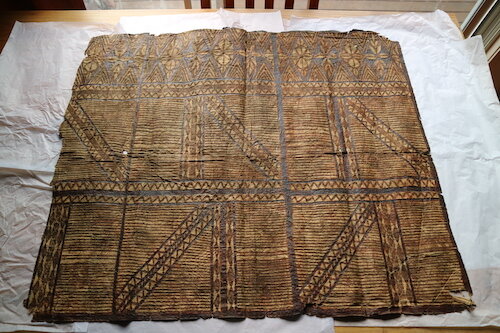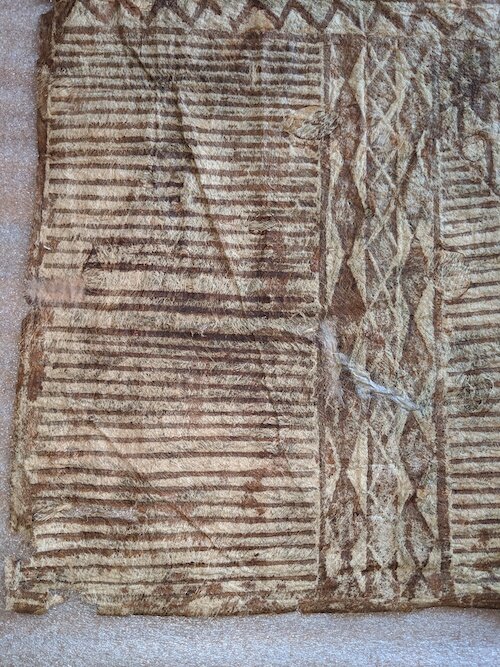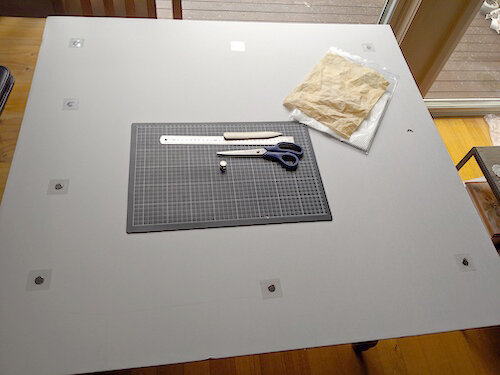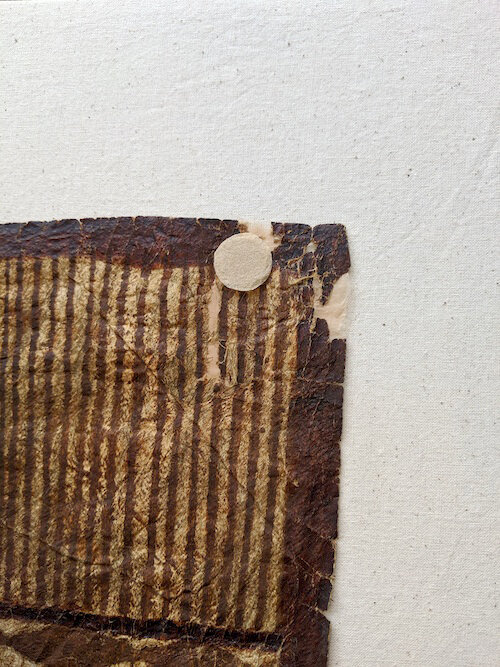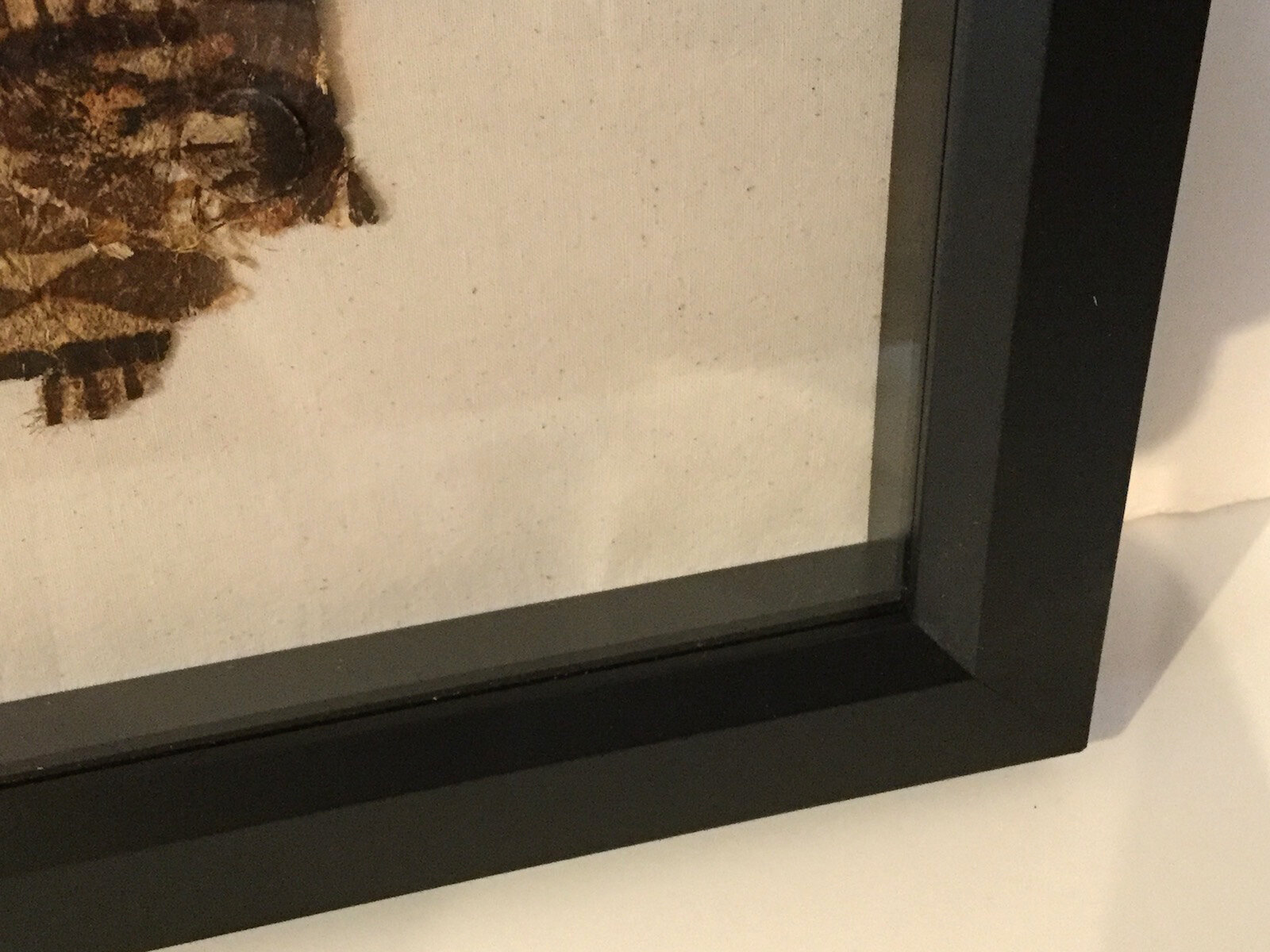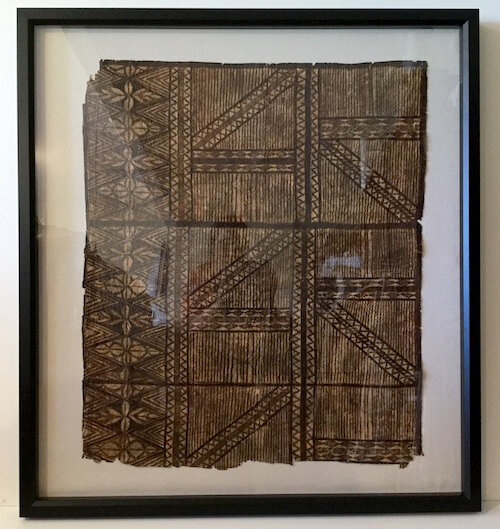Private collection, Queensland, Australia.
CONServing and rehousing a siapo - samoan clothDescription - A piece of bark cloth, with varying pigmented, geometric patterns and curved motifs across the front surface. The back surface is 'undecorated', however pigment bleed is visible throughout.
Condition - The surface undulates, changeably throughout, with more notable deformations occurring though the centre. Signs of physical damage, predominantly tears, holes and localised loss are most prominent along all edges of the cloth. Small holes are a feature throughout the cloth, consistent with the natural occurrence of where small branches existed in the pre-harvested trees. Larger holes are identified in the upper proper left (PL) quadrant. Areas of weakened cloth are also noticeable through the centre, likely attributed to creasing and fold lines identified in close proximity. Minor creases and folds are identified around the edges of the cloth.
What we did – The surface was cleaned with a dirt eraser to remove dry dirt and dust. Minor creasing was flattened with the application of local humidification. We repaired small tears with toned Japanese paper and created small “butterfly bandages”, adhered to the reverse with a 50/50 blend of wheat starch paste and methylcellulose, diluted in distilled water. A backing board was constructed using double-wall archival blue/grey corrugated board. Eight, rare earth neodymium magnets were embedded around the inside border, then covered with small pieces of Mylar (stretched polyester film). A piece if neutral calico was used to line the board. We laid the Siapo over the front surface, to allow the tooth of the fabric to grip to the reverse of the cloth. Small interleaving pieces of Mylar were placed between the object and colour-matched paired magnets. We used spun-bound polyester to cover the top magnets, which we coloured with matching acrylic tones, to replicate the patterns of the Siapo. Finally, a wide profile frame with UV filtering acrylic was added to allow the piece to be displayed and handled safely.
Before treatment – front surface of a Siapo. Private Collection. © Tiaki Objects Conservation.
During treatment – repairing a split in the Siapo by adhering small slivers of thin Japanese tissue, to the back repair area. Private Collection. © Tiaki Objects Conservation.
Preparing a mount board, with rare earth neodymium magnets, embedded in the double-wall archival board. Private Collection. © Tiaki Objects Conservation.
Preparing the surface of the magnets that are used to secure the Siapo for display. This is used as an alternative to hinging or stitching. Barrier layers are ‘interleaved’ between the base magnet and between the object surface and top magnet to protect the object. Private Collection. © Tiaki Objects Conservation.
After treatment – the pattern and colour of the Siapo is matched to ensure the magnets blend with the cloth and do not interfere with the overall aesthetic of the piece. Private Collection. © Tiaki Objects Conservation.
After treatment - the Siapo was re-housed to prevent further embrittlement and damage. The owner was gifting this to family members, so the addition of some conservation framing meant the new owner could safely handle it and preserve its condition.

